Office hours
- Mon - Thurs: 9AM - 5:30PM ET
- Friday: 9AM - 4:30PM ET
Explore the history of the DISC theory and how it led to the most personalized suite of DiSC assessments available: Everything DiSC®.
The DISC assessment is a ‘four-quadrant’ tool that an individual can use to learn about their natural and adapted behaviors and the behaviors of others. Many organizations, large and small, use this tool to help employees and staff develop better communication and self-awareness skills. Frequently, DISC is used to create a more unified culture within whole organizations. Many organizations also use it with a leadership development capacity.
Over the years, DISC has become increasingly popular, and we are often asked ‘who invented DISC?’ and why does your version of DiSC have a small ‘I’? We created this page to provide the rich history of DISC, and how a theory and the original DISC profile became the Everything DiSC Profile that we offer today.
1928
All DISC tests and assessments are based on the research and the DISC Theory of William Moulton Marston, Ph.D. (1893-1947).
Who is William Moulton Marston?
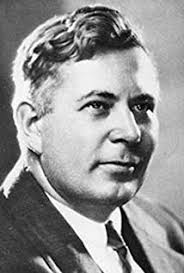 In 1928, Marston published his book titled Emotions of
In 1928, Marston published his book titled Emotions of
Normal People and he introduced his DISC theory. In this book, he classified four categories of human behavior which we now know as the DiSC Personality Types:
Dominance (D-Style)
Inducement (Influence or i-Style)
Submission (Steadiness or S-Style)
Compliance (Conscientious C-Style)
While Marston saw that a person had a primary ‘style’, he viewed a person as a ‘color-wheel’ in that the colors of each style blended into each other. Essentially, a person’s behavior was made up of a little bit of every style.
Marston’s work was influenced by his contemporaries such as Carl Jung and Sigmund Freud who focused on abnormal behavior. However, Marston sought to generalize if people exhibit classifiable normal behaviors.
It’s important to note that Marston did not develop an assessment.
Fun fact; in addition to his work on DISC and understanding personality, Maston also created the lie detector test, and introduced “Wonder Woman” into the DC comic strip universe.
1948
The history of DISC Testing begins with Walter V. Clarke, 20 years after Marston published Emotions of Normal People.
 Clarke built a test for personnel selection called the Activity Vector Analysis (AVA). The AVA was designed as a ‘short personality measure’ and used as a hiring selection tool for various industries.
Clarke built a test for personnel selection called the Activity Vector Analysis (AVA). The AVA was designed as a ‘short personality measure’ and used as a hiring selection tool for various industries.
To create the assessment, Clarke identified a list of 81 adjectives that are commonly used in describing someone. He then asked participants to check the specific words (from his list of adjectives) that they felt best describe themselves.
After collecting and analyzing the data on this instrument, he discovered that the four factors produced from the data (aggressive, sociable, stable, and avoidant). If you think this sounded a lot like DiSC, we would agree.
Clarke concluded that the data could be best explained by Marston’s model of human behavior. However, Clarke’s AVA wasn’t focused entirely on Marston’s DISC Theory, he also used the work of Prescott Lecky to create his test.
1950's
In 1951, John Cleaver joined Walter Clarke Associates and over time developed his own assessment, which he called Self Discription.
In 1956, Cleaver left Walter Clarke Associates to form J.P. Cleaver Co. Like Clarke, Cleaver intended to use his assessment as a way to select a person for a certain job based on their behavior.
Cleaver’s assessment began like the AVA as an adjective checklist, but it evolved into a 24, four-adjective, forced-choice ‘question’ instrument.
1970's
In the 1970s, John Geier, a faculty member in the University of Minnesota’s Department of Health Sciences, used Cleaver’s Self Discription to create the original Personal Profile System® (PPS). This profile is now known as the Personal Profile System 2800 Series.
![]() Geier formed a company called Performax (which eventually became Inscape Publishing and is now Wiley).
Geier formed a company called Performax (which eventually became Inscape Publishing and is now Wiley).
PPS used the same 24 four-adjective ‘questions’ and items that appeared in the original Self Discription. Geier’s main contribution was not so much in the area of instrument development but in furthering the understanding of the 15 basic patterns discovered by Clarke. Geier collected pattern descriptions through clinical interviews with hundreds of people. By extracting behavioral information from those interviews, he provided richer descriptions of these 15 patterns that had come to be known as the Classical Profile Patterns. The DiSC Classic products still use these classic profile patterns to this day.
1994
A research effort was launched to improve the DiSC instrument that had basically remained unchanged since 1959. Led by Pamela Cole, new items were added, non-functioning items were removed, and the overall reliability of the instrument increased.
new items were added, non-functioning items were removed, and the overall reliability of the instrument increased.
The new PPS was named the Personal Profile System 2800 Series (PPS 2800), referring to the new number of four-adjective questions that were now included in the assessment (28). First published in1994, this version of the PPS is still used today, although it has since been renamed DiSC Classic®.
2000
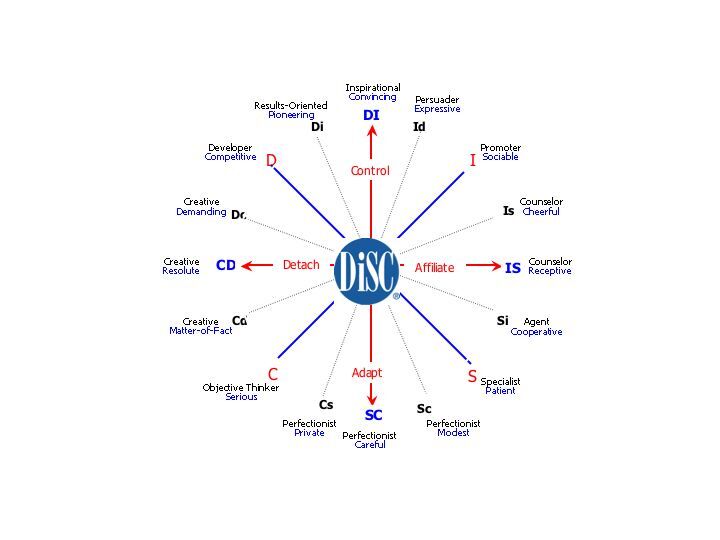 In the early 2000s, researchers began experimenting with ways to represent DiSC® with a circumplex model. A person’s DiSC style was tested and represented using a dot within the DiSC map rather than a line graph.
In the early 2000s, researchers began experimenting with ways to represent DiSC® with a circumplex model. A person’s DiSC style was tested and represented using a dot within the DiSC map rather than a line graph.
The advantage of this representation was ease of interpretation and application. Researchers discovered that this circumplex approach to measuring and presenting DiSC shared substantial overlap with the Interpersonal Circumplex theory in academic psychological research.
For a brief period of time, a product called DiSC Indra was produced and sold. The Everything DiSC® series of reports was developed based on this product and the research that was used to create DiSC Indra.
The first Everything DiSC application to be launched was Everything DiSC Sales in 2007. This profile presented the participant’s DiSC style using the circumplex DiSC map. Unlike the DiSC Classic PPSS report (since discontinued), the Sales profile focused on helping the learner understand the relevance of his or her DiSC style to a particular role within the organization. This report contains three broad sections:
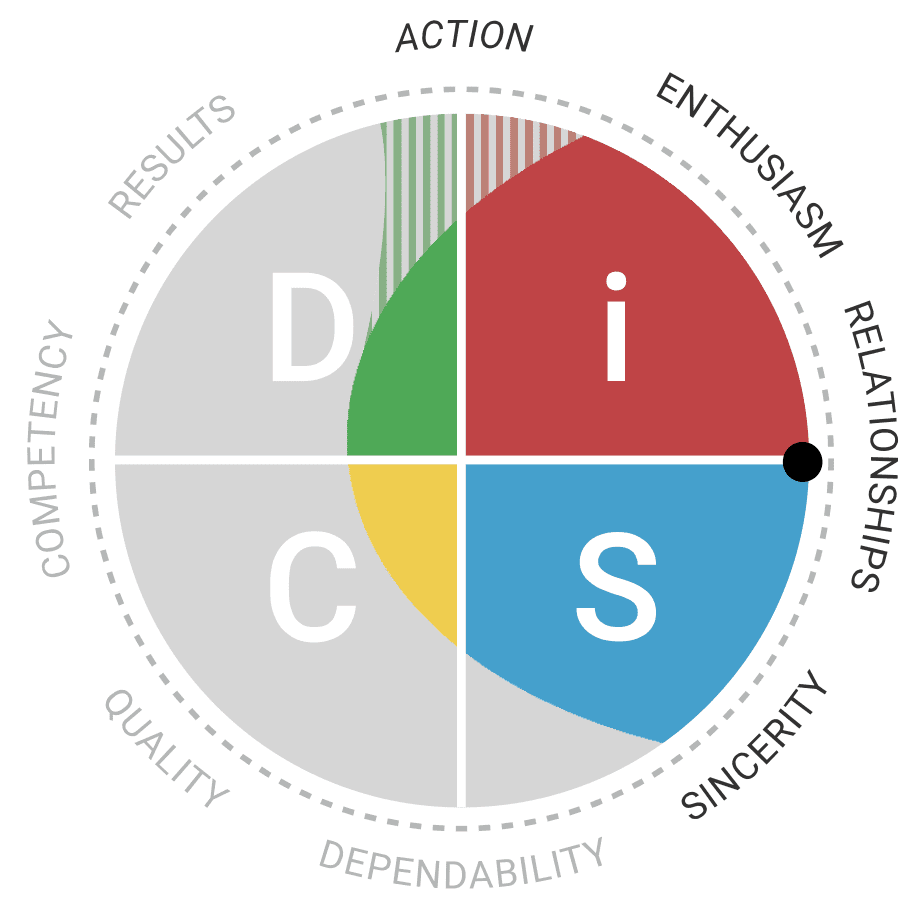
2008 – Everything DiSC® Management
The second Everything DiSC application to be launched was Everything DiSC Management. This profile is designed to help managers understand their own DiSC styles as well as the styles of the people they manage. Further, it helps managers bridge the gaps when there are style differences. The report contains five broad sections:
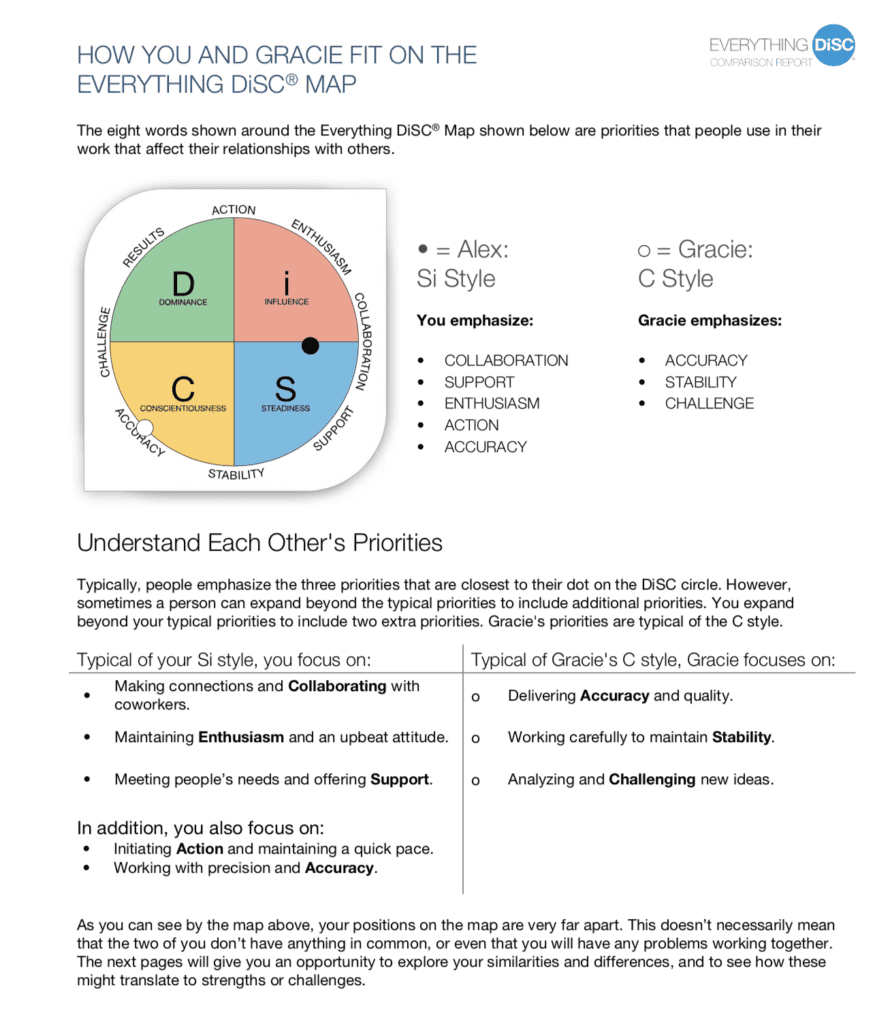
The third Everything DiSC application to be launched was Everything DiSC Workplace®. This profile is designed for use by a wide range of participants, regardless of their role in the organization. The report contains three broad sections:
• Discover Your DiSC Style
• Understanding Other Styles
• Building More Effective Relationships
At the same time, Everything DiSC Comparison Reports were launched. These reports allowed for two people to compare themselves on not only their DiSC style, but also on a series of basic personality traits, such as careful vs. daring or skeptical vs. accepting.
Drawing on three years of research, the Everything DiSC 363® for Leaders profile was launched. This is a 360-degree assessment that uses the DiSC model as a backdrop. In the assessment, observers are asked to evaluate a leader on 24 behaviors, such as finding opportunities or showing diplomacy.
Unlike other 360 assessments, DiSC 363 utilizes a commenting system that provides selectable comments to ensure that the leader reserves formative feedback without being hurt in the process.
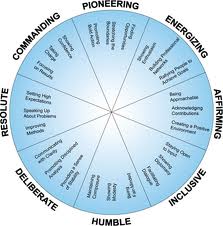
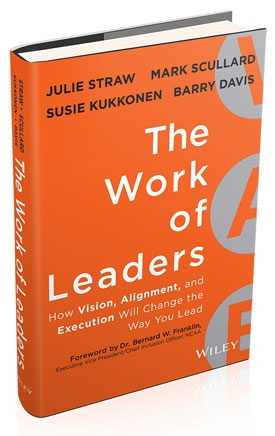
Based on extensive research, this report splits the work of leaders into three categories: Vision, Alignment, and Execution.
Using self-ratings of 18 different traits, participants are taught why some leadership behaviors come naturally to them and others require more deliberate effort. This profile doesn’t discern if a person could be a leader; rather, it explains how a person would be a leader.
The profile shows a person’s leadership abilities on a continuum so a participant is able to recognize their leadership capacity.
Adaptive testing allows an assessment to change depending ona respondent’s previous answers. This is useful in cases wherethe results of a standard assessment are inconclusive. In these instances, the Everything DiSC assessment will ask the respondent additional questions to reduce ambiguity in their results.
Adaptive testing is the latest improvement to increase the accuracy of the Everything DiSC assessment and make the feedback more personalized and relevant for users. Research has shown that adaptive testing has increased the accuracy by 32% compared to the forced choice DiSC Classic assessment.
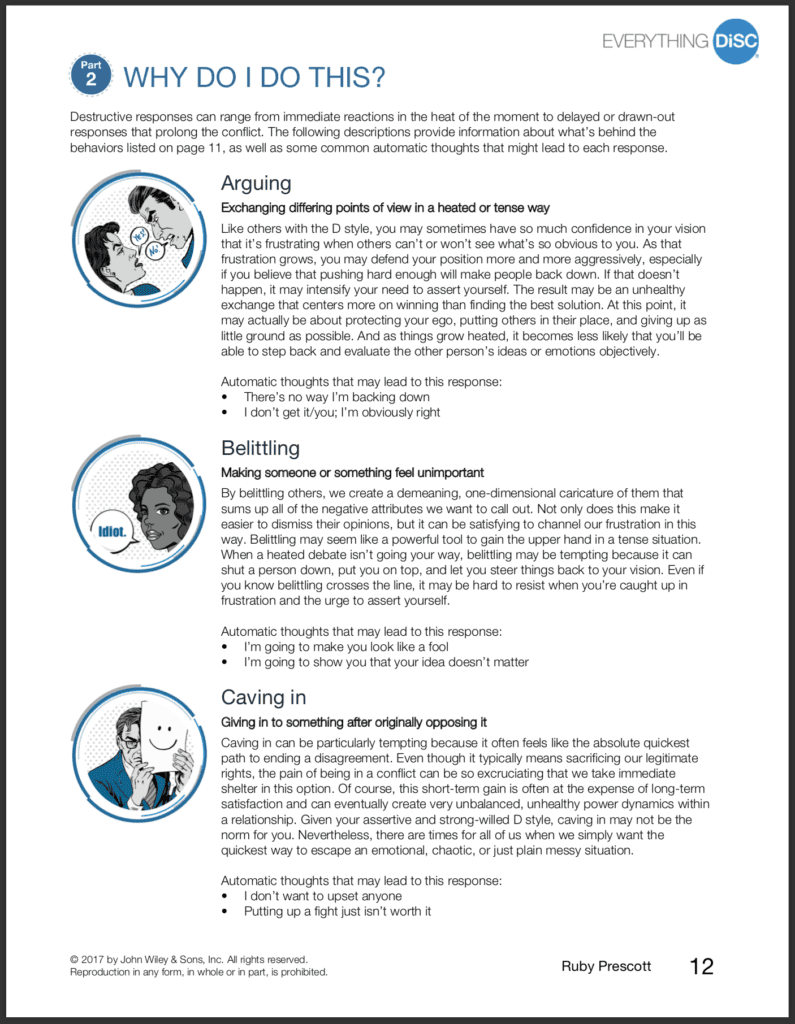
Rather than focus on a step-by-step process for conflict resolution, Everything DiSC Productive Conflict helps learners curb destructive behaviors so that conflict can become more productive, ultimately improving workplace results and relationships.
This report combines the power of DiSC with powerful imagery and content describing how workplaces can become destructive.
All Everything DiSC report goes through extensive beta testing. As a Center for Internal Change client, we connect our clients to these beta tests so they can be on the front lines of innovation. Find out how you can start working with us today!
© 2023 Center for Internal Change | All rights reserved